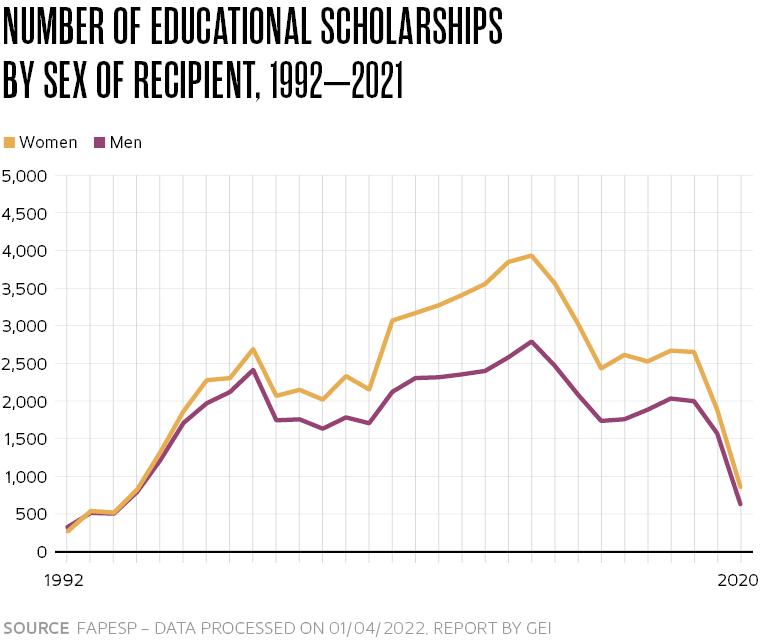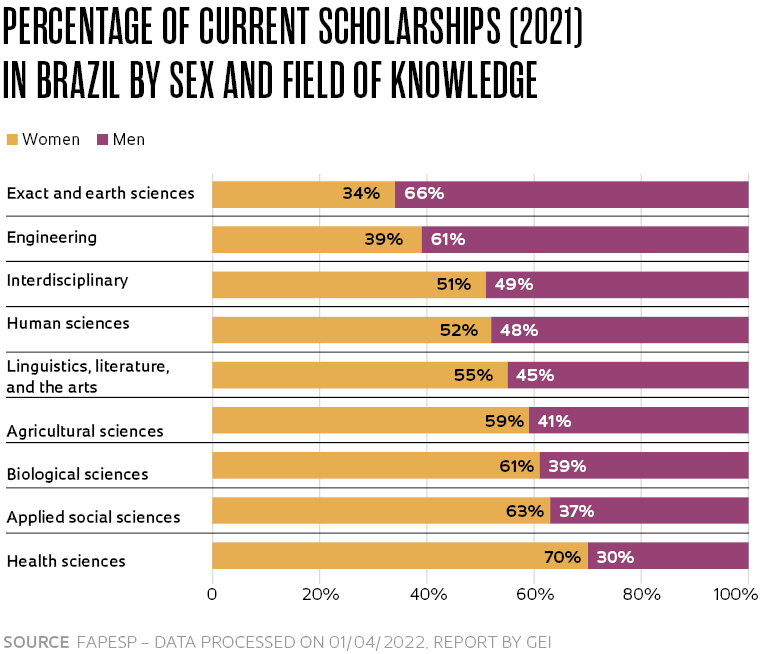- Between 1992 and 2021, the number of scholarships awarded by FAPESP followed similar trajectories for men and women. For both, there was intense growth in the 1990s and relative stability in the early 2000s, followed by further increases until 2012, when the number peaked. From then on, the number of scholarships granted fell until 2015, then remained stable for four years before dropping significantly in 2020 and 2021, likely due to the effects of the COVID-19 pandemic.
- Although the pattern was the same for men and women, the changes were more intense among the latter: in periods of growth and in periods of decline, the rises and falls in the number of scholarships awarded to women were greater than for men. The result was that women obtained more scholarships in the period as a whole: they received 57% of the 123,141 awarded
DATA
Women in science

- Despite women predominating over the period, their prevalence was not uniform across all fields of knowledge. For scholarships ongoing in 2021, for example, there were more female recipients in health sciences (70%), applied social sciences (63%), biological sciences (61%), and agricultural sciences (59%). Male scholarship holders formed the majority in exact and earth sciences (66%) and engineering (61%)

Notes Educational scholarships include undergraduate (45%), master’s (23%), doctorate (20%), and postdoctorate (12%) grants
Source FAPESP – data processed on 01/04/2022. Report by GEI
Republish
